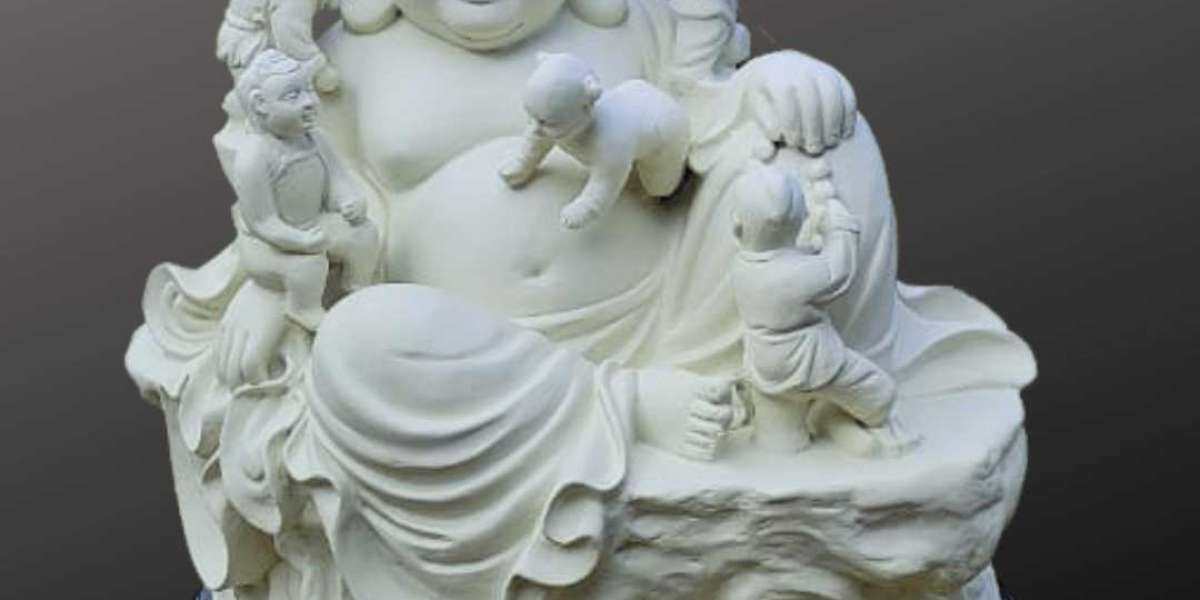In a world of fast-paced living and digital noise, our homes have become sacred spaces where we seek calm, comfort, and connection. Interior design today is no longer about flashy trends or lifeless aesthetics—it’s about nurturing mindfulness, balance, and individuality. And among the timeless elements that continue to inspire serene living, Terracotta Buddha statues stand out as rustic masterpieces that combine earthy charm with spiritual significance.
This blog explores how terracotta Buddha statues, especially those crafted with traditional techniques, have the power to transform ordinary spaces into sanctuaries of peace. We'll also touch on how even a Laughing Buddha Statue, often made in various materials including terracotta, can uplift the energy of your space and invite positive vibes.
The Warmth of Terracotta: More Than Just Clay
Terracotta, derived from the Italian words terra (earth) and cotta (cooked), is one of the oldest art forms known to humanity. It carries an ancient soul, one that has echoed through civilizations—from Indus Valley relics to the sacred temples of Southeast Asia.
When shaped into a Buddha statue, terracotta takes on a unique spiritual energy. The texture is unrefined, almost primal, which lends authenticity and humility to the figure. It doesn't seek to shine or impress. Instead, it offers quietude—an invitation to slow down.
Each handmade statue bears the fingerprints of the artisan, often passed down through generations. This human touch cannot be replicated by machine-made décor. When placed mindfully in a home, a terracotta Buddha creates a grounded ambiance, blending rustic beauty with meditative stillness.
Symbolism Behind Buddha Statues in the Home
In Buddhist philosophy, the image of Buddha serves as a reminder—not of worship, but of the potential for inner peace and enlightenment within each of us. The presence of a Buddha statue acts as a symbol of calm, compassion, and balance.
Terracotta enhances this symbolism with its natural essence. Unlike marble or brass, terracotta doesn’t demand polish or perfection. It embodies the impermanence and simplicity that the Buddha himself preached. Whether placed in your living room, entryway, or garden, a terracotta Buddha aligns with the earthy elements, grounding the space and inviting mindfulness.
Terracotta Buddha Varieties: From Meditative to Joyful
Not all Buddha statues are the same. Each posture, hand gesture (mudra), and expression carries a different meaning. Some of the popular forms found in terracotta include:
Meditating Buddha: Eyes closed, hands in the Dhyana mudra, seated in lotus posture—ideal for meditation corners and study rooms.
Bhumisparsha Buddha (Earth-Touching): Depicting the moment of enlightenment, this form is perfect for spiritual corners or puja rooms.
Reclining Buddha: Represents the Buddha in his final moments, symbolizing release and peace—suitable for quiet spaces or bedrooms.
Laughing Buddha Statue: Though not the historical Buddha, this jovial figure is beloved in homes for its association with abundance, good luck, and happiness. A Laughing Buddha Statue made of terracotta adds a rustic charm while still radiating joy.
Each of these statues can be integrated into different corners of your home depending on your intention—whether it’s tranquility, wisdom, or joy.
Where Tradition Meets Interior Design
Terracotta Buddha statues are versatile elements in home decor. They work beautifully with various design aesthetics:
Rustic/Bohemian Homes: The raw texture of terracotta complements wooden furniture, handwoven rugs, jute accents, and earthen palettes.
Minimalist Spaces: A single statue placed on a floating shelf or console table can act as the focal point, emphasizing less-is-more elegance.
Indoor-Outdoor Living: Terracotta handles moisture and light well, making it ideal for verandas, gardens, and patios. A meditating Buddha among plants enhances the sense of nature and balance.
Zen Interiors: Pairing terracotta statues with neutral tones, pebbles, and soft lighting turns any corner into a meditative nook.
Importantly, terracotta’s muted colors never overpower a room—they subtly blend in, yet leave a lasting impression.
Placing Your Buddha Statue: A Matter of Intention
Where you place your Buddha statue matters—not just aesthetically but energetically. According to Vastu and Feng Shui principles, here are a few guidelines:
Face East: The Buddha attained enlightenment under the Bodhi tree facing east. Placing the statue facing this direction is believed to bring wisdom and growth.
Height Matters: Avoid placing Buddha statues directly on the floor. Use a raised platform or shelf to show respect and elevate the energy.
Avoid Bathrooms and Bedrooms: Unless the bedroom is designed with a spiritual theme, it’s best to keep the statue in a shared or meditative space.
Laughing Buddha Near Entryways: The Laughing Buddha Statue is best placed near the main door, where it can greet guests and invite happiness into the home.
More than rules, though, trust your instinct. Choose a spot where the statue resonates with your energy and where it naturally draws your attention in a peaceful way.
Caring for Your Terracotta Buddha
Unlike stone or metal statues, terracotta is a bit more delicate and porous. A few tips to care for your terracotta Buddha:
Keep it dry: Avoid placing it in areas where water might accumulate.
Clean gently: Use a soft, dry cloth to wipe off dust. Avoid harsh cleaning agents or scrubbing.
Protect from breakage: If you have children or pets, ensure the statue is in a safe, secure spot.
Despite its fragility, terracotta ages beautifully. Slight cracks or aging only add character, reinforcing the theme of imperfection as beauty.
The Emotional Connection: Why Terracotta Speaks to Us
In a time where home decor is often guided by algorithms and trends, terracotta Buddha statues offer something real. They speak to the soul. They remind us of stillness, of roots, of earthiness. There’s a comfort in knowing that the same kind of clay used centuries ago still brings warmth into our homes today.
And beyond aesthetics, these statues often carry personal meaning. For some, it marks the beginning of a spiritual journey. For others, it may be a memory from a trip to a pottery village. And for many, it’s simply the quiet joy of returning home to a space that feels grounded and alive.
Even a Laughing Buddha Statue—light-hearted and joyful—reminds us to take life less seriously and find delight in small things. In terracotta, he looks even more approachable, like an old friend with a warm chuckle.
Where to Find Authentic Terracotta Buddha Statues
India is rich in pottery traditions, with places like Molela (Rajasthan), Bishnupur (West Bengal), and Khurja (Uttar Pradesh) known for their terracotta craftsmanship. Many artisans today continue to create Buddha statues by hand, using traditional kilns and organic pigments.
You can find these statues in local craft fairs, artisan markets, and now increasingly online through platforms that support local craftsmanship. When buying, look for slight imperfections—that's often a sign it was made by hand and not mass-produced.
Additionally, inquire about the materials used. Terracotta mixed with synthetic binders may look good but lacks authenticity and might not last as long.
Final Thoughts: Bringing Peace Home
Decorating your home isn’t just about style—it’s about creating a feeling. A terracotta Buddha statue brings more than form and color; it brings essence. It brings story, heritage, and soul. Whether you're redesigning your living room, setting up a calming nook, or simply looking for a meaningful gift, this humble figure offers profound beauty and depth.














